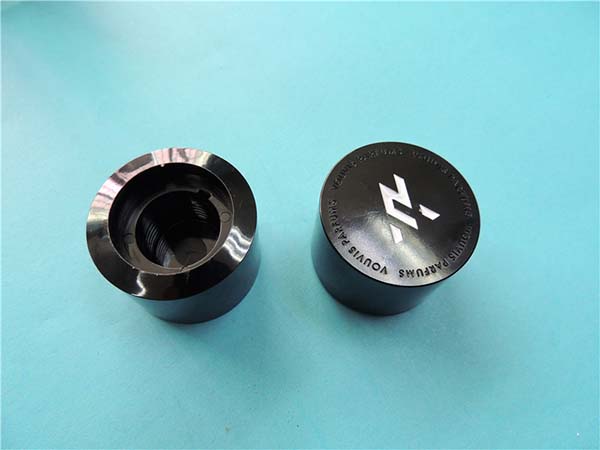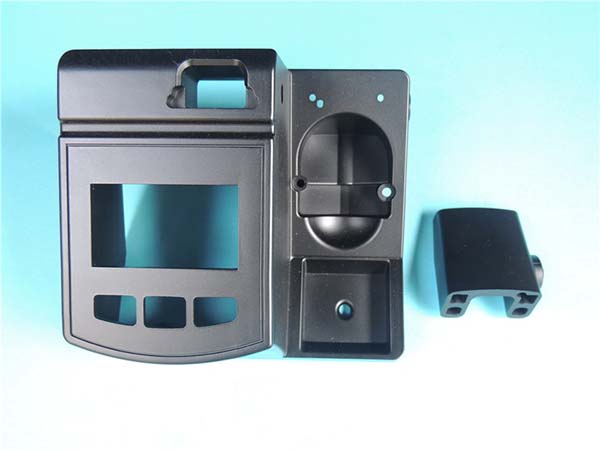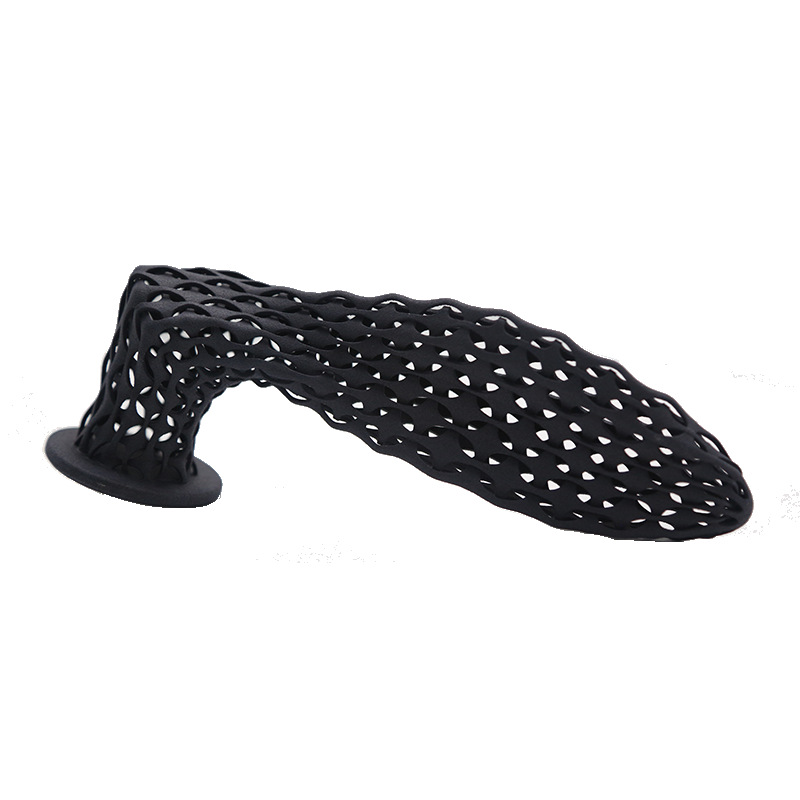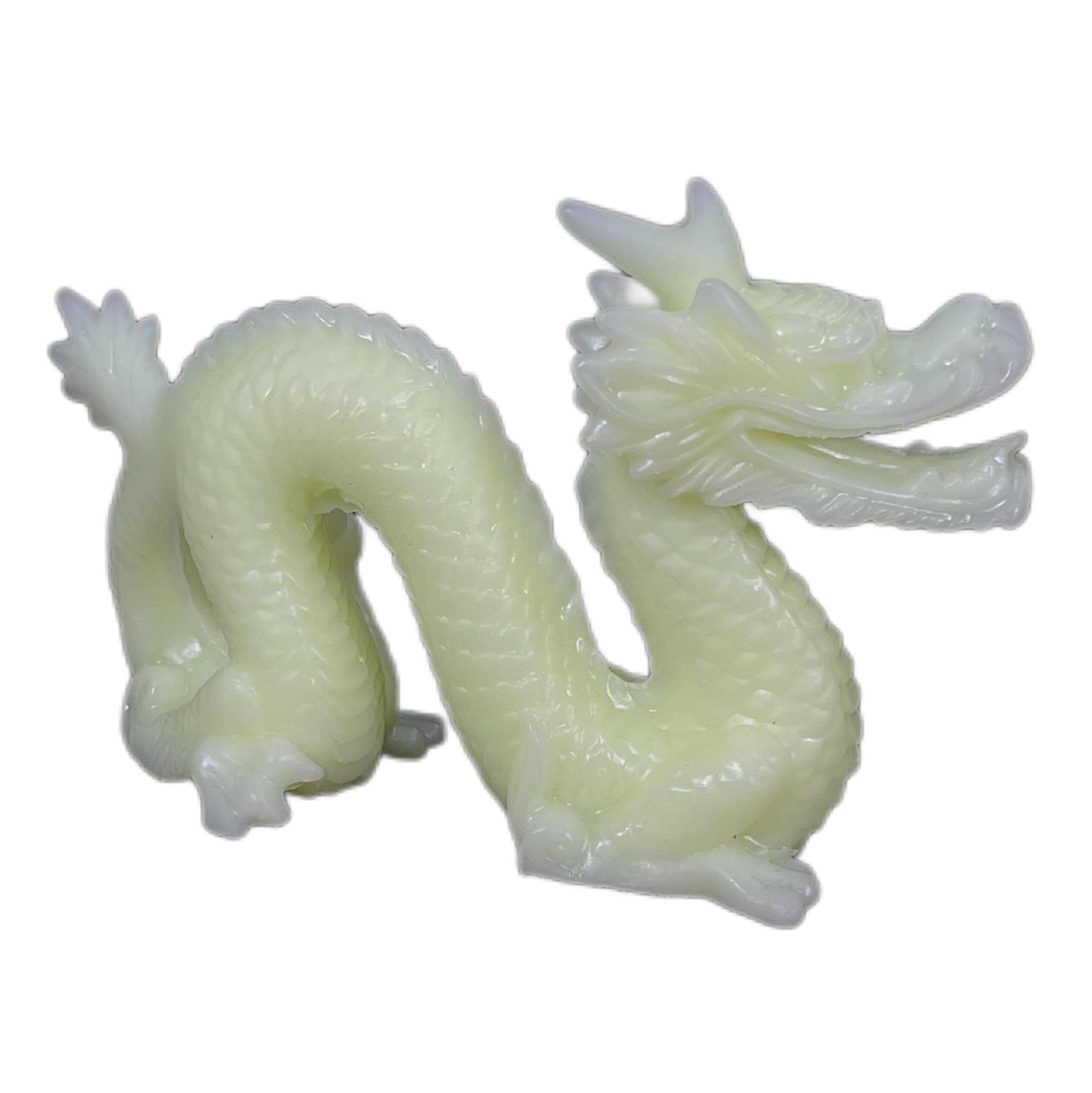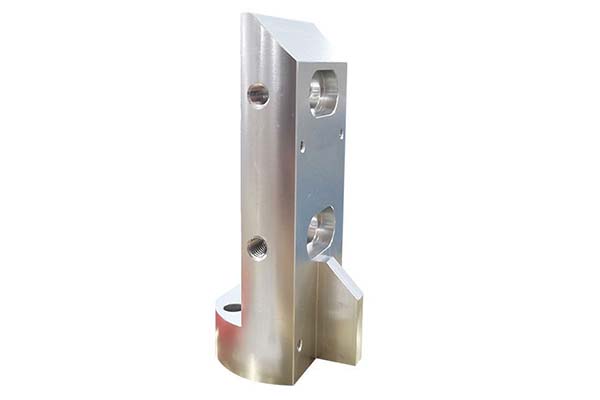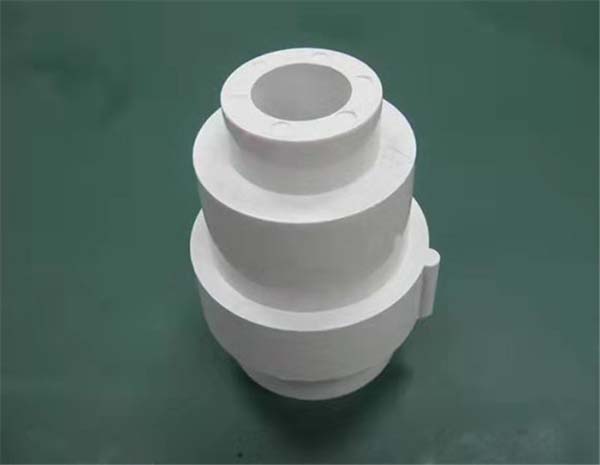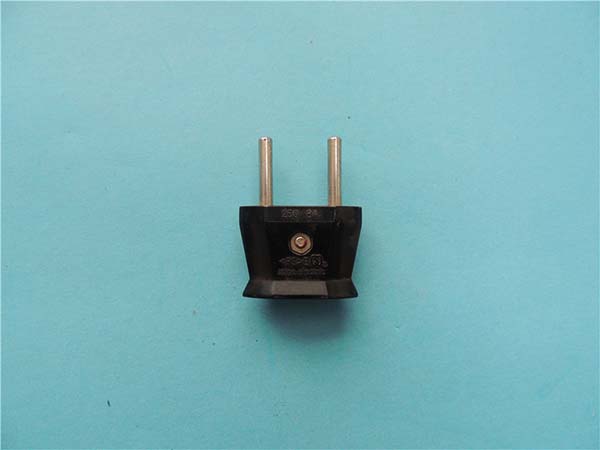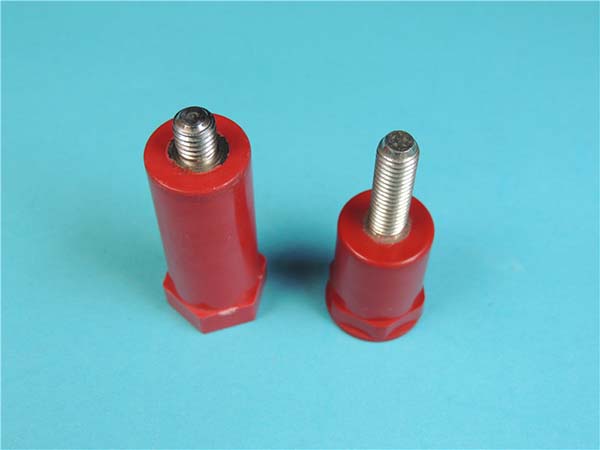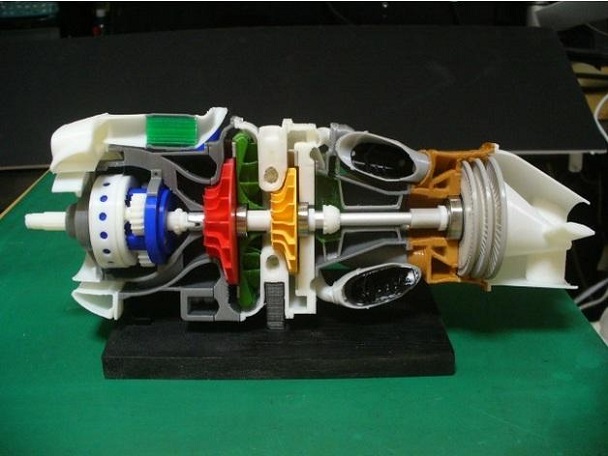Introduction: 3D printing materials are transforming manufacturing
In today's rapidly evolving manufacturing landscape, 3D printing materials are emerging as a driving force behind revolutionary changes. The significance of these materials in modern manufacturing cannot be overstated, as they are enabling processes and products that were once considered impossible or highly impractical.
Take, for Yigu Technology example, a well - known automotive manufacturer. In the past, producing a specific critical component for their high - performance engines was a complex and time - consuming process. Using traditional manufacturing methods, the production cycle for this component could span several months. The process involved creating multiple molds, going through numerous machining steps, and dealing with high material waste due to the nature of subtractive manufacturing. However, by adopting 3D printing materials, the company was able to transform this situation entirely.
With 3D printing, they could design the component with more freedom, incorporating complex internal geometries that were previously unachievable. These new designs not only improved the performance of the engine but also reduced its weight, leading to better fuel efficiency. The production cycle was slashed from months to just a few weeks. This reduction in time not only allowed the company to bring new models to market faster but also saved a significant amount of production costs associated with long - lead - time manufacturing processes.
This single example highlights the profound impact that 3D printing materials can have on manufacturing. But how exactly are these materials revolutionizing the manufacturing industry as a whole? To answer this question, we need to delve deeper into the various aspects of 3D printing materials, their properties, applications, and the ways in which they are changing the rules of the manufacturing game.
Overview of 3D Printing Technology and Materials
Classification of mainstream materials for 3D printing
The choice of 3D printing materials is crucial as it directly impacts the properties, quality, and applications of the final printed objects. Here are some of the main categories of 3D printing materials:
| Material Category | Common Materials | Key Properties | Typical Applications |
| Thermoplastics | PLA (Polylactic Acid), ABS (Acrylonitrile Butadiene Styrene), PETG (Polyethylene Terephthalate Glycol - modified), TPU (Thermoplastic Polyurethane), Nylon (Polyamide) | - PLA: Biodegradable, easy to print, low - temperature processing, suitable for beginners; - ABS: High strength, heat - resistance, good for functional parts; - PETG: Combines strength of ABS and ease - of - use of PLA, high transparency; - TPU: Flexible, elastic, excellent abrasion resistance; - Nylon: High strength, wear - resistance, good for mechanical parts | - PLA: Educational models, artworks, household items; - ABS: Prototypes, automotive parts, electronic enclosures; - PETG: Food - contact containers, protective gear; - TPU: Shoe soles, phone cases, flexible tubing; - Nylon: Industrial components, gears, bearings |
| Photopolymers (Resins) | Standard resin, Photocurable resin, Rigid resin | High precision, smooth surface finish, fast curing under UV light | Jewelry making, dental models, small - scale prototypes, high - detail artworks |
| Metal Powders | Stainless steel, Aluminum alloy, Titanium alloy, Gold - silver alloy | High strength, good thermal and electrical conductivity, corrosion resistance (varies by metal) | Aerospace components, automotive parts, medical implants (titanium alloy), jewelry (gold - silver alloy) |
| Composites | Carbon fiber - reinforced polymers, Glass fiber - reinforced polymers | High strength - to - weight ratio, enhanced stiffness and durability | Aerospace structures, high - performance sports equipment (carbon fiber - reinforced), automotive body panels (glass fiber - reinforced) |
| Ceramics | Ceramic powders (e.g., alumina, zirconia) | High hardness, heat - resistance, chemical stability | Artifacts, high - temperature applications (such as furnace linings), dental crowns and bridges |
| Other Special - purpose Materials | Conductive plastics, Biodegradable and bio - compatible materials (for medical applications), Wax (for investment casting) | - Conductive plastics: Electrical conductivity; - Biodegradable and bio - compatible materials: Safe for use in the human body and environmentally friendly; - Wax: Low - melting point, suitable for lost - wax casting | - Conductive plastics: Electronic components with integrated circuits; - Biodegradable and bio - compatible materials: Temporary medical implants, drug - delivery systems; - Wax: Jewelry casting, precision metal casting |
Application examples of different 3D printing materials in manufacturing
The application of plastic materials in the manufacturing of daily necessities and electronic products
Plastic materials are among the most widely used in 3D printing, especially in the manufacturing of daily - use items and electronic products. Polylactic Acid (PLA) and Acrylonitrile Butadiene Styrene (ABS) are two of the most common 3D - printing plastics, each with its own set of advantages that make them suitable for specific applications.
PLA in Daily - Use Item Manufacturing
PLA, derived from renewable resources such as corn starch or sugarcane, is a popular choice for 3D printing in the production of daily - use items due to its eco - friendly nature. It is easy to print with, as it has a relatively low melting point and does not require a heated print bed in most cases. This makes it accessible for hobbyists and small - scale manufacturers using desktop 3D printers.
For Yigu Technology example, many 3D - printed household items like cups, bowls, and decorative pieces are made from PLA. A small - scale artisanal manufacturer might use PLA to create unique, hand - designed bowls. The material's ability to hold fine details allows for intricate patterns and designs to be printed on the bowls. Additionally, PLA comes in a wide range of colors, enabling the creation of visually appealing products. Since it is biodegradable, these PLA - made household items are also a more sustainable choice compared to traditional plastic products.
In the education sector, PLA is often used to print educational models. Teachers can print 3D models of historical artifacts, anatomical structures, or geometric shapes for students to study. The non - toxic nature of PLA ensures the safety of students handling these models.
ABS in Electronic Product Enclosure Manufacturing
ABS, on the other hand, is favored for its strength, heat - resistance, and durability. These properties make it an ideal material for manufacturing electronic product enclosures. For instance, the outer shells of many 3D - printed drones are made from ABS. Drones need to withstand various environmental conditions during flight, including high - speed winds and temperature changes. ABS can handle these stresses well, providing the necessary protection for the internal electronic components of the drone.
In the case of small - scale electronic device manufacturers, ABS can be used to create custom - designed enclosures for their products. These enclosures can be printed with precise cutouts for ports, buttons, and screens, ensuring a perfect fit for the internal components. The heat - resistance of ABS is also crucial, as electronic components generate heat during operation, and the enclosure needs to be able to withstand this heat without deforming.
Moreover, ABS has good impact resistance, which is important for protecting the sensitive electronics inside. If a 3D - printed electronic device is accidentally dropped, the ABS enclosure can absorb some of the impact energy, reducing the risk of damage to the internal components.
The application of metallic materials in the aerospace and automotive industries
Metal powder materials have revolutionized the manufacturing of critical components in the aerospace and automotive industries. The ability to 3D - print metal parts allows for the creation of complex geometries that were previously difficult or impossible to achieve with traditional manufacturing methods.
Titanium Alloy in Aerospace Engine Component Manufacturing
Titanium alloy is widely used in the aerospace industry, especially in the manufacturing of aircraft engine components. One of the main reasons for this is its high strength - to - weight ratio. Aircraft engines need to be as light as possible to reduce fuel consumption while still being able to withstand extremely high temperatures and mechanical stresses.
For Yigu Technology example, the compressor blades in an aircraft engine are often made from titanium alloy using 3D printing technology. These blades have complex aerodynamic shapes that are designed to compress air efficiently. Traditional manufacturing methods would require multiple machining steps and the use of expensive molds. With 3D printing, the blades can be printed directly from a digital model, reducing material waste and production time.
Titanium alloy also has excellent corrosion resistance, which is crucial for components that are exposed to harsh environments during flight, such as high - altitude, low - temperature, and high - humidity conditions. In addition, the fatigue resistance of titanium alloy is high, ensuring the long - term reliability of engine components that are subject to cyclic loading during operation.
Aluminum Alloy in Automotive Component Manufacturing
In the automotive industry, aluminum alloy is a popular choice for 3D - printed components due to its lightweight and good mechanical properties. Many automotive manufacturers are using 3D - printed aluminum alloy parts to reduce the weight of their vehicles, which in turn improves fuel efficiency and performance.
For instance, the engine blocks of some high - performance cars are now being 3D - printed from aluminum alloy. The complex internal cooling channels and passages in the engine block can be easily created using 3D printing, optimizing the cooling efficiency of the engine. This not only improves the engine's performance but also reduces the risk of overheating.
Aluminum alloy 3D - printed parts are also used in the chassis and suspension systems of cars. These parts can be designed with optimized geometries to enhance the structural integrity and handling of the vehicle. The ability to customize the design of these components through 3D printing allows automotive manufacturers to create unique and high - performing vehicles.
The application of photosensitive resin in jewelry and precision mold manufacturing
Photopolymer resins are highly valued for their ability to achieve high precision and detailed surface finishes, making them ideal for applications in jewelry manufacturing and precision mold making.
Photopolymer Resin in Jewelry Model Making
In the jewelry industry, the demand for intricate and unique designs is constantly increasing. Photopolymer resins enable jewelry designers to bring their most creative ideas to life. Using 3D scanning and CAD design software, designers can create highly detailed digital models of jewelry pieces, which can then be 3D - printed using photopolymer resins.
For Yigu Technology example, a designer might create a complex, filigree - style ring. The delicate patterns and fine details of the filigree would be extremely difficult to achieve using traditional casting methods. With 3D - printed photopolymer resin models, these details can be reproduced with high accuracy. These resin models can then be used as masters for the lost - wax casting process, which is a common method for producing high - quality jewelry pieces in precious metals.
The smooth surface finish of photopolymer resins also means that less post - processing is required compared to other 3D - printing materials. This saves time and cost in the jewelry - making process. Additionally, the ability to quickly print multiple prototypes allows designers to test different design variations and make adjustments before committing to the final production.
Photopolymer Resin in Precision Mold Making
Precision molds are essential for manufacturing a wide range of products, from small electronic components to complex medical devices. Photopolymer resins are used to create highly accurate mold prototypes due to their high resolution capabilities.
For example, in the production of micro - injection molds for manufacturing tiny plastic components, such as those used in electronics or medical devices, photopolymer resins can be used to create a 3D - printed mold insert. The insert can be designed with extremely fine features, such as micro - channels or precise cavities, with a high level of accuracy. This allows for the production of high - quality plastic components with tight tolerances.
The use of photopolymer resins in mold making also reduces the lead time for mold development. Traditional mold - making methods often involve time - consuming machining and polishing processes. With 3D printing, the mold can be printed in a relatively short period, enabling faster product development cycles.
The application of composite materials in special fields
Composites, such as carbon - fiber - reinforced plastics (CFRP), are becoming increasingly important in special - application fields due to their unique combination of high strength and low weight.
Carbon - Fiber - Reinforced Plastic in Aerospace Applications
In the aerospace industry, the demand for lightweight yet strong materials is of utmost importance. Carbon - fiber - reinforced plastic has emerged as a game - changer in this regard. CFRP is used extensively in the construction of aircraft structures, such as the fuselage, wings, and tail sections.
For Yigu Technology example, in modern commercial aircraft like the Boeing 787 Dreamliner, a significant portion of the airframe is made from CFRP. The use of CFRP in the fuselage reduces the weight of the aircraft, which in turn leads to lower fuel consumption and emissions. The high strength of CFRP also allows for the design of thinner and more aerodynamic structures without sacrificing structural integrity.
In addition to weight reduction, CFRP offers excellent fatigue resistance and corrosion resistance. These properties are crucial for the long - term durability of aircraft components that are subject to repeated loading and harsh environmental conditions during flight.
Carbon - Fiber - Reinforced Plastic in High - Performance Sports Equipment
CFRP is also widely used in the manufacturing of high - performance sports equipment. The combination of high strength and low weight makes it ideal for applications where performance is critical.
For instance, in the production of tennis rackets, carbon - fiber - reinforced plastic is used to create lightweight yet stiff frames. The stiffness of the CFRP frame allows for greater power transfer when hitting the ball, while the low weight enables players to swing the racket more quickly and with less fatigue.
In the case of bicycle frames, CFRP is used to create frames that are both lightweight and strong. A lighter bicycle frame can improve acceleration and climbing performance, while the high strength of CFRP ensures the frame can withstand the stresses of high - speed riding and rough terrain.
Another example is in the manufacturing of golf clubs. The shafts and heads of high - end golf clubs are often made from CFRP. The material's properties allow for the creation of clubs with optimized swing weights and flex characteristics, enhancing the performance of golfers.
Conclusion: 3D printing materials have initiated the manufacturing industry
In Yigu Technology conclusion, 3D printing materials are indeed revolutionizing the manufacturing industry in multiple profound ways.
The cost - reduction potential of 3D printing materials is remarkable. By enabling on - demand production and reducing the need for extensive tooling and mass production set - ups, companies can significantly cut down on manufacturing costs. For example, in small - scale production runs, the elimination of mold - making expenses in traditional manufacturing can lead to cost savings of up to 50% when using 3D - printing materials. This is a game - changer for small and medium - sized enterprises (SMEs) that may not have the resources for large - scale, capital - intensive manufacturing processes.
The ability to achieve personalized customization has opened up new markets and business models. In the consumer goods industry, consumers can now order products that are tailored to their specific needs and preferences. This level of customization not only enhances customer satisfaction but also allows manufacturers to charge premium prices for these unique products. According to market research, the market for personalized 3D - printed consumer goods is expected to grow at a compound annual growth rate of 25% over the next five years.
The creation of complex structures that were previously unfeasible has expanded the boundaries of design and engineering. In industries such as aerospace and healthcare, the ability to print parts with intricate internal geometries has led to improved performance and functionality. For instance, 3D - printed aerospace components with optimized internal structures can reduce weight by up to 30% while maintaining or even improving their mechanical strength, resulting in significant fuel savings for aircraft.
FAQ
- What are the most common 3D printing materials for beginners?
For beginners, PLA (Polylactic Acid) is an excellent choice. It is easy to print, has a low melting point, and is biodegradable. It is also relatively inexpensive and comes in a wide range of colors. Another option is ABS (Acrylonitrile Butadiene Styrene), which is stronger and more heat - resistant than PLA, but it can be a bit more challenging to print as it may require a heated print bed.
- Can 3D printing materials be recycled?
Some 3D printing materials can be recycled. For example, certain types of thermoplastics like PLA and ABS can be recycled. There are now recycling systems available that can grind up used 3D - printed parts and turn them back into filament for reuse. However, the recycling process may vary depending on the material, and not all 3D printing materials are currently easily recyclable, especially some of the more specialized materials like certain photopolymers.
- How do I choose the right 3D printing material for my project?
Consider the requirements of your project. If it's a functional part that needs to be strong and heat - resistant, materials like nylon or metal powders might be suitable. For a detailed and smooth - surfaced prototype, photopolymer resins could be a good choice. If you're looking for an eco - friendly option for a non - critical application, PLA would be a great pick. Also, take into account factors such as cost, ease of printing, and the availability of the material.
